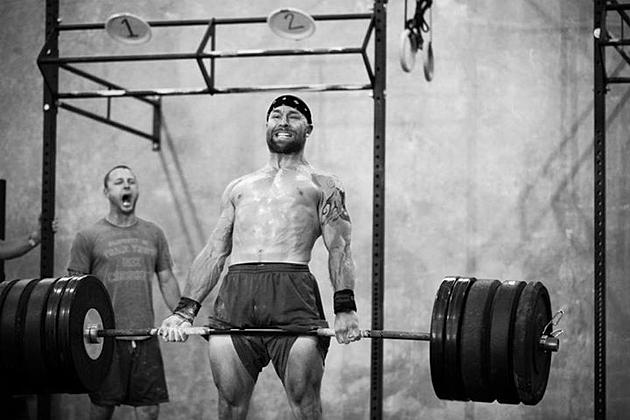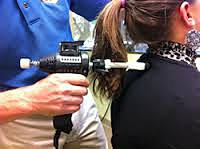The following is an article from Today's Chiropractic
Magazine. Dr.Sam Vella was featured with two other chiropractors from
around the nation that have a strong influence of surfing, chiropractic
and maintaining a healthy balance on life, fun and taking care of
patients.
Dr. Vella now practices at Heavenly Chiropractic and Wellness Center in South Lake Tahoe, CA. To schedule an appointment with Dr. Vella please call (530) 600-3669.
Heavenly Chiropractic and Wellness Center
3637 Larch Ave. Ste 1
South Lake Tahoe, CA 96150
Chiropractors On Board
By Katie Brown
Whether an occasional recreational hobby or part of
a daily routine, surfing is one of the most popular water sports. Now,
with variations like wakesurfing, bodysurfing and paddleboarding, almost
anyone within water’s reach can join in on this popular and physically
challenging pastime. From a surfing enthusiast to a professional
competitor to an enjoyment-seeker, Today’s Chiropractic LifeStyle spoke to three chiropractors who have found that there are few things better than catching the perfect wave.
Sam Vella, D.C.
 |
| Dr. Sam Vella on the North Shore of Oahu |
While on track to become a dentist, Vella, an
accomplished downhill skier, found himself surfing in California after
making a major career change. A pre-medicine major at Oregon State
University, Vella had sustained a few neck and lower back injuries from
skiing and was seeing a chiropractor. “After going to a chiropractor for
those injuries and seeing what he did, I thought it would be a lot
cooler than looking at people’s mouths all day,” he says.
Soon, Vella enrolled at Life Chiropractic College
West and took up surfing to satisfy his athletic inclinations. After
graduating in 2000, Vella embarked on a nine-month trip around the
world. With a portable adjusting table and surfboard in tow, he visited
22 countries throughout Europe, the South Pacific, Southeast Asia and
beyond to spread the chiropractic message and experience the world.
Upon his return, Vella opened two practices in San
Diego before landing in Haleiwa, Hawaii, on the North Shore, where he
opened his third practice, Vella Chiropractic. Aside from caring for his
patients at his practice, from 2004 to 2011 Vella served as the
attending chiropractor for the Vans Triple Crown of Surfing, a series of
three professional surfing events in Hawaii that take place in Haleiwa,
Sunset Beach and the Banzai Pipeline.
“I think the special moments are being able to care
for the world’s best surfers. It’s an honor to be able to do that,”
Vella says. “I absolutely love what I do, and I think it’s an honor and
privilege to be a chiropractor. I love how it fits into my lifestyle in
Hawaii. I’m keeping people healthy and myself healthy.”
In September 2011, Vella opened a fourth practice
in Honolulu. While Vella’s main focus remains providing chiropractic
care to his patients and expanding his practice services, he’s still
able to surf about three days a week. “With surfing, I like the physical
activity side and being in nature,” Vella says. “It’s the way it
teaches you to be absolutely present and go with the flow, and you learn
to go with the next wave that comes at you.”
Tim Brown, D.C.
Since childhood, surfing has been a staple in
Brown’s life. His dad was one of the top surfers in Newport Beach,
Calif., and Brown was eager to follow in his footsteps. Fifty years
later, Brown is still catching waves at least five times a week.
A multi-sport athlete, Brown’s interest in becoming
a sports doctor was sparked during his time at the University of
Redlands in California, where he played quarterback and receiver for the
university’s football team. “I was injured often and was intrigued by
the mysteries of the healing process,” he says. “I was constantly
bugging the trainers and team doctors for their ‘secrets’ on how to
perform and recover more effectively.”
After college, Brown began preparing for the MCAT
with the hope of attending medical school. One day while he was surfing,
Brown ran into an old friend who suggested that a career in
Chiropractic would be a good fit for him. “He knew I was into living a
healthy, natural lifestyle, and he recommended that I look into
Chiropractic,” he says. “He gave me an article on Dr. Leroy Perry. He
was one of the first internationally known sports chiropractors. Perry
framed it up nicely for me by talking about health as being a balance
between what we eat, think and do. It simply felt easy to decide that
[addressing] the causes of disease, caring with natural means and
offering the patient better lifestyle and activity choices for daily
living was much more appealing to me than the career of the allopathic
doctor who focused purely on symptom-oriented care, drugs and surgery.
That article forever altered my path and purpose. For the first time in
my life, I truly knew what I was meant to dedicate my life to—
becoming the best sports chiropractor I was capable of becoming.”
Brown graduated from Cleveland Chiropractic College
in 1984, and three years later he opened his own practice, Newport
Spine and Sport. Since becoming a chiropractor, Brown has had the
opportunity to combine two of his passions—surfing and caring for
athletes. He spent nine years as the Director of Sports Medicine for the
OP Pro Championships, also known as the U.S. Open of Surfing, and is
currently the Co-Medical Director for the Association of Surfing
Professionals, Northern Hemisphere. His career has also led him to
adjust and care for some of the world’s top athletes in sports other
than surfing. Upon being named Director of Sports Medicine for the
Association of Volleyball Professionals, a position he held from
1987–1996, Brown became the first chiropractor to be named medical
director for a professional sport. Brown has also been named to many
sports medicine teams over his career, including the U.S. Track and
Field Championships, Ironman World Triathalon Championships, U.S.
Diving, Ballet Pacifica and Race Across America. In 1998, the American
Chiropractic Association Sports Council named him Sports Chiropractor of
the Year.
Today, Brown’s main focus is his company
IntelliSkin, which produces posture-correcting garments. Having worked
with athletes who were competing primarily in sand and water, Brown
began using his Specific Proprioceptive Response Taping techniques
(SPRT) on his athletes. “After five years of taping many hundreds of
injuries, one of my athletes said, ‘Hey. When are you going to wise up
and just build me something I can put on and take off?’” Brown says.
“Intelli-Skin can be used during competition, training, recovery and
travel. It protects from injury while improving function because its
futuristic design stimulates the sensorimotor system to improve muscle
balance by retraining posture and quality of movement.”
Even with his non-stop schedule, Brown still makes
time to catch a few waves as often as possible “One of the greatest
things about surfing is that it’s a constant highlight,” he says. “I’ve
got a short attention span and enjoy stimulating my senses, and with
surfing, you get to be out in the beauty of nature, getting healthy and
exercising. No two waves are ever the same, so every time you catch a
wave, it’s a fresh experience that trains you to keep focused and be
prepared. I love all sports, but nothing is a close second to a good day
surfing.”
Craig Pruitt, D.C.
Pruitt did not have an instant connection to
surfing. While working for his practice in Middletown, R.I., one of
Pruitt’s patients, who at the time was covered in sand and seaweed,
suggested that Pruitt give surfing a try. A lover of water sports,
Pruitt enjoyed activities like fishing, scuba diving, waterskiing and
spearfishing, and he soon decided to heed the advice of his patient. But
after a few unsuccessful—and painful—attempts, Pruitt was reluctant to
continue. “I remember thinking to myself, ‘This is not very fun. Being
held under water and tossed like a rag in a washing machine really
sucks,’” Pruitt says. “But after I caught my first wave, I was hooked
for life.”
Before Pruitt became a chiropractor, he was serving
in the U.S. Air Force as a Security Police Officer. After hurting his
lower back and experiencing muscle atrophy in one of his legs, Pruitt
was told surgery would be his only route to recovery. “The Air Force
doctors wanted me to do surgery, but I went to a chiropractor instead,”
he says. “I literally watched my leg grow back to a normal size and
thought, ‘That’s cool—no surgery, no drugs. I would love to do that for
people.’”
Pruitt graduated from Palmer College of
Chiropractic in 1999 and opened his own practice, Pruitt Chiropractic.
“We have always focused on contributing to our community and correcting
subluxations,” Pruitt says. “Our community was ready for our style of
Chiropractic—simple, principled and fun.”
Through his practice, Pruitt has had the
opportunity to care for many local surfers and water sport athletes. “In
our office, we see a lot of surfers, swimmers, skateboarders,
windsurfers and watermen,” he says. “I have a lay lecture designed for
water sport athletes to teach them the benefits of chiropractic care to
reduce the possibility of injuries and increase performance and
longevity. People who surf want to do it until the day they die, and
that requires a healthy spine and nervous system—period.”
Now, with 13 years of surfing under his belt,
Pruitt has had an array of experiences, from a terrifying injury that
almost ended his surfing career to traveling the world to enjoy some of
the best waves. Yet, between running his practice and spending time with
his family, Pruitt, who still continues to surf daily, says his
favorite moments in the water are when he’s enjoying the camaraderie of
his surfing friends. “I like when we camp on the beach, surf, cook over a
fire and chill out,” he says. “We talk about ‘that wave’ we caught—its
shape, its speed and how we rode the wave. You end up remembering a
moment in time when you were riding a great wave, and you just keep
replaying the image over and over again, like a favorite movie.”





